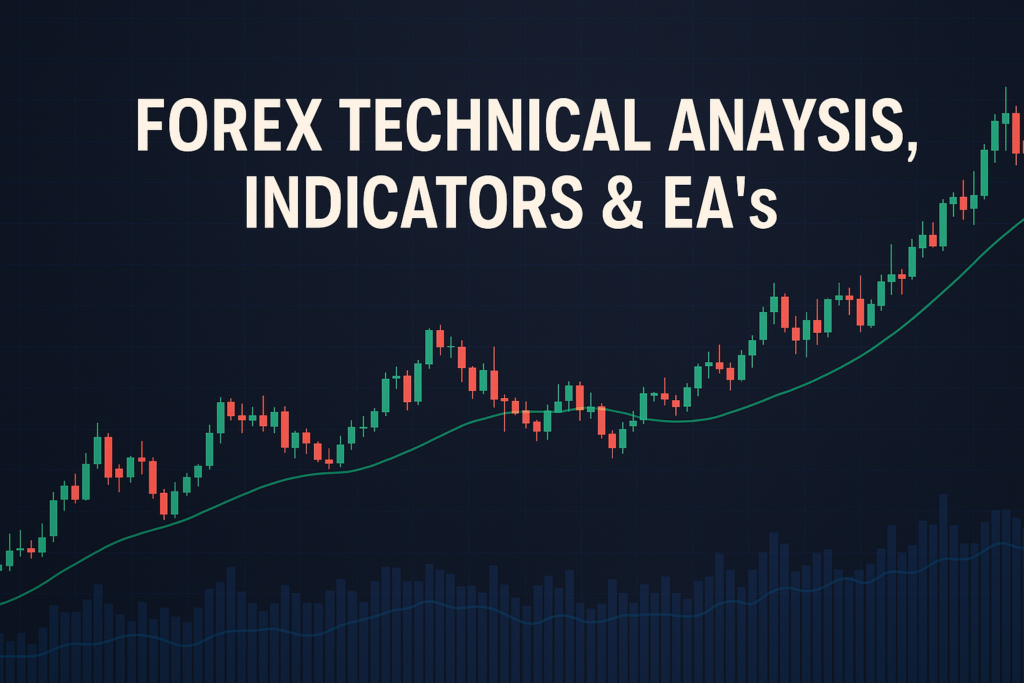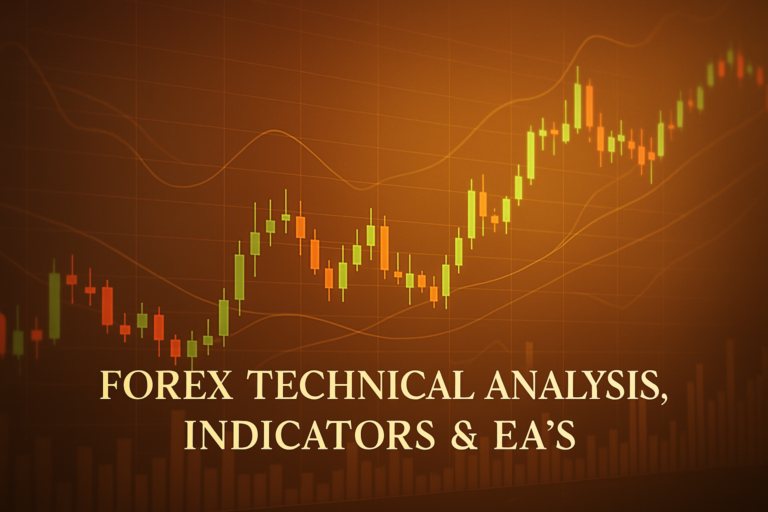
Moving Average is essential for Forex trading, helping traders identify trends and improve decision-making for better results.
In the world of Forex trading, the Moving Average is a crucial tool that many traders lean on. Imagine you’re trying to predict the weather. You wouldn’t just look at today’s temperature; you’d consider the last few days to get a clearer picture. That’s what the Moving Average does for currency prices. It helps smooth out the noise, making trends more visible, which is essential for making informed decisions.
However, many traders, both newbies and seasoned pros, often find themselves confused when it comes to using Moving Averages. They struggle to understand how to apply them effectively or how to interpret the signals they provide. This article will break down the concept of Moving Averages, explain their significance, and guide you through practical strategies to enhance your Forex trading game.
What is a Moving Average?
A Moving Average is a simple yet powerful tool in Forex trading. It takes a set number of past price points and finds their average, providing a smoother line on a price chart. Think of it as a way to filter out the daily price fluctuations, allowing traders to see the overall direction of the market more clearly. If you look at a chart with many ups and downs, the Moving Average will create a line that flows more steadily, helping you make sense of the chaos.
Types of Moving Average
There are different types of Moving Averages, each serving a unique purpose:
- Simple Moving Average (SMA): This average is calculated by adding the closing prices over a specific period and dividing by that period’s number. It’s straightforward and easy to understand.
- Exponential Moving Average (EMA): This one gives more weight to recent prices, making it more responsive to new information. Traders often prefer it for its sensitivity.
- Weighted Moving Average (WMA): Similar to EMA, but it applies different weights to all prices in the period, ensuring that more recent prices are more influential in the calculation.
How Moving Average Smooths Out Price Action
Imagine you’re walking through a crowded market. Sometimes, you can’t see the best pathway because of the crowd. If you had a friend guiding you, pointing out the best route, you would navigate better. The Moving Average acts like that friend. It smooths out the price action, helping traders see whether the market is trending up or down. By following this line, traders can make more informed decisions based on the overall market direction.
Common Periods Used and Why
Traders often use different periods for their Moving Averages to suit their trading style. Common periods include:
- 5-period: Useful for very short-term trading, capturing quick price movements.
- 20-period: A balance between short and medium-term trading; it provides a clearer view of market trends.
- 50-period: Often used for longer-term trading, helping to identify sustained trends.
The History of Moving Average: How It Became Popular
Origin of Moving Average
The concept of Moving Averages dates back to the early 1900s. A mathematician named Charles Dow, one of the founders of the Wall Street Journal, introduced the idea to help investors make sense of stock price trends. Dow believed that analyzing past price data could help predict future movements, making it easier for traders to make informed decisions.
When Did Traders Start Using It Widely?
By the 1970s, Moving Averages gained popularity among Forex traders. They began to understand how this tool could help in identifying trends and timing their trades. As technology advanced and trading platforms became more accessible, the use of Moving Averages exploded, becoming a staple in the trader’s toolbox.
Real-Life Stories
Many professional traders attribute their success to the Moving Average. For example, a trader named Sarah was struggling to find reliable entry points in the market. She started using the 50-period Moving Average to guide her trades. Over time, she learned to spot trends and made significant profits by entering trades at the right moment. Her story inspires many who face similar challenges in Forex trading.
Advantages and Disadvantages of Moving Average
Advantages:
Moving Averages offer several benefits for traders:
- Helps Identify Trends Easily: Moving Averages make it simple to see the market direction, helping traders spot opportunities.
- Useful for Dynamic Support and Resistance: They can act as support and resistance levels, guiding traders on where to enter or exit trades.
- Works Well for Crossover Strategies: Traders often use Moving Average crossovers to signal buy or sell opportunities, making strategy development easier.
Disadvantages:
However, there are some downsides:
- lags behind price movements: Moving Averages are based on past data, which means they can sometimes react slowly to market changes.
- Can Give False Signals in Sideways Markets: In markets that aren’t trending, Moving Averages can lead to confusion and false signals, causing traders to make poor decisions.
How to Apply Moving Average on MT4 & MT5
Step-by-step Guide to Adding Moving Average on Charts
To add a Moving Average to your MT4 or MT5 chart, follow these simple steps:
- Open your trading platform.
- Right-click on the chart and select “Indicators.”
- Choose “Trend” and then “Moving Average.”
- Adjust the settings as desired and click “OK.”
Customizing Moving Average Settings
You can customize your Moving Average settings to suit your trading style. Choose the period, color, and type (SMA, EMA, WMA) that works best for you. This customization helps you visualize the data in a way that is clear and effective for your strategy.
Saving Templates for Easy Application
If you find a setup you like, consider saving it as a template. This way, you can quickly apply your preferred Moving Average settings to new charts without starting from scratch each time.
5 to 7 Trading Strategies Using Only Moving Average
1. All Time Frame Strategy (M5 to D1)
Best Time Frame: M15
This strategy works across different time frames. You look for a crossover between a short-term Moving Average (e.g., 5-period) and a long-term Moving Average (e.g., 20-period). When the short-term crosses above the long-term, it’s a buy signal. When it crosses below, it’s a sell signal. For instance, if the 5-period crosses above the 20-period, you might buy the currency pair.
2. Trending Strategies
Best Time Frame: H1
This strategy involves using a 50-period Moving Average. If the price is above the 50-period line, it indicates an uptrend, and you should look for buying opportunities. If the price is below, it indicates a downtrend, suggesting sell opportunities. For example, if the price bounces off the 50-period Moving Average and starts moving upwards, it’s a potential buy signal.
3. Counter Trade Strategies
Best Time Frame: H4
In this strategy, you look for reversals. When the price hits a significant Moving Average (e.g., 200-period), and you see a rejection (like a candlestick wick), it may signal a reversal. For instance, if the price hits the 200-period Moving Average and then immediately bounces back, it might be time to sell.
4. Swing Trades Strategies
Best Time Frame: D1
This strategy uses a combination of a 20-period and a 50-period Moving Average. When the 20-period crosses above the 50-period, it indicates a potential swing buy. Conversely, when the 20-period crosses below the 50-period, it signals a swing sell. For example, if the 20-period crosses up, you might buy in anticipation of a price swing.
5 to 7 Trading Strategies Combining Moving Average with Other Indicators
1. All Time Frame Strategy (M5 to D1) with RSI
Best Time Frame: M15
In this strategy, you combine a 5-period Moving Average with the RSI (Relative Strength Index). When the 5-period Moving Average crosses above the 20-period Moving Average and the RSI is below 30, it’s a strong buy signal. For example, if both conditions are met, you could enter a buy trade.
2. Trending Strategies with MACD
Best Time Frame: H1
Using a 50-period Moving Average and the MACD (Moving Average Convergence Divergence), look for crossovers. A bullish crossover in MACD above the moving average indicates a potential buy. For instance, if MACD crosses above zero and the price is above the 50-period Moving Average, consider a buy.
3. Counter Trade Strategies with Bollinger Bands
Best Time Frame: H4
Combining a 200-period Moving Average with Bollinger Bands, traders can identify reversal points. If the price touches the lower Bollinger Band and is near the 200-period Moving Average, it can signal a buy. For example, if prices bounce off both indicators, it may indicate a potential upward movement.
4. Swing Trades Strategies with Stochastic Oscillator
Best Time Frame: D1
Combine a 20-period Moving Average with the Stochastic Oscillator. When the price is above the 20-period and the Stochastic shows oversold conditions (below 20), it may indicate a buy opportunity. If Stochastic is above 80, it could signal a sell. For instance, if you see both indicators align, that could be your cue to enter a trade.
Top 10 FAQs About Moving Average
1. What is the best period for Moving Averages?
It depends on your trading style. Short periods (like 5 or 10) are best for day trading, while longer periods (like 50 or 200) suit swing or position trading.
2. How do I know when to buy or sell using Moving Averages?
Look for crossovers: buy when a short-term Moving Average crosses above a long-term one, and sell when it crosses below.
3. Can Moving Averages predict market reversals?
While they can help identify trends, they may not always predict reversals accurately. Use them in conjunction with other indicators for better results.
4. Are Moving Averages effective in volatile markets?
Moving Averages can lag in volatile markets, potentially providing false signals. It’s best to combine with other indicators to confirm signals.
5. Should I use one type of Moving Average or multiple?
Using both SMA and EMA can be beneficial, as they provide different perspectives on price movements. Experiment to find what works best for you.
6. How do I set up Moving Averages on trading platforms?
Most platforms allow you to add them via the indicators section. Customize according to your preferences and trading strategy.
7. Can I use Moving Averages for Forex pairs?
Yes, Moving Averages are commonly used in Forex trading to analyze currency pairs and identify trends.
8. What are the limitations of using Moving Averages?
They lag behind price movements and can give false signals in sideways markets. It’s essential to use them alongside other methods.
9. Is it worth learning Moving Averages for a beginner?
Absolutely! Understanding Moving Averages can provide a solid foundation for your trading journey and help you make informed decisions.
10. How often should I adjust my Moving Average settings?
Adjust settings based on your trading style and market conditions. Regularly review your strategy to ensure it remains effective.
Conclusion
In summary, Moving Averages are a powerful tool that every Forex trader should understand. They help in identifying trends, providing support and resistance, and developing effective trading strategies. By applying Moving Averages correctly, you can enhance your trading experience and make more informed decisions.
Remember, practice makes perfect. Before risking real money, test various strategies using demo accounts. This way, you’ll build confidence and find what works best for you.
Expand Your Knowledge
- 📌 Forex Trading Learning Road Map
- 📌 Forex Trading Course with no Fees
- 📌 Forex Trading Issues, Problems, and Solutions
- 📌 Forex Daily Forecast & Live Updates
- 📌 Forex Fundamental & News Analysis: Tomorrow’s Market Movers & Trade Opportunities
- 📌 Forex Education Hub: Learn & Profit
- 📌 Forex Technical Analysis, Indicators & EA’s
Start Trading Today
Ready to take your forex trading to the next level? Open an account with Exness, one of the most trusted platforms in the industry. 👉 Sign Up Now and start trading with confidence!
Exness stands out with ultra-low spreads for mini traders, instant withdrawals, and zero spread accounts for pro traders. Trusted since 2008, Exness offers lightning-fast execution, no hidden fees, and a secure, transparent trading environment—giving you the edge you need to succeed. 🚀 Join now and trade smarter!
Watch this helpful video to better understand Moving Average:
Note: The video above is embedded from YouTube and is the property of its original creator. We do not own or take responsibility for the content or opinions expressed in the video.
In this video, the presenter discusses an effective strategy for using the moving average indicator in Forex trading, specifically focusing on the “moving average crossover” technique. Many traders make the mistake of instantly executing trades based solely on crossovers without considering market conditions. The presenter emphasizes that this strategy only works well in trending markets, while in sideways or ranging markets, it can lead to numerous false signals, resulting in significant losses. Additionally, he cautions against using too many moving averages, as this can delay entry signals. For optimal results, he recommends using just two moving averages—the 20-period and the 50-period—on higher time frames, such as the daily chart or the one-hour chart. By analyzing how the market reacts to these crossovers, traders can identify whether a specific market is likely to follow the crossover signals or not.
To successfully implement this strategy, traders should focus on identifying the right market that demonstrates a history of reacting positively to moving average crossovers. If the market has previously followed crossover signals, there’s a higher probability that it will do so again in the future. The presenter also suggests using an exit indicator, like the ATR trailing stop loss, to maximize profits instead of waiting for the moving averages to cross back over again, which can lead to missed opportunities. He introduces another method of incorporating the moving average as a support and resistance tool, combined with the stochastics indicator to enhance trading decisions. Lastly, he highlights the benefit of combining the 200 exponential moving average with other indicators to improve their win rates. By adhering to these guidelines and strategies, traders can enhance their trading effectiveness and potentially achieve better results in the Forex market.



